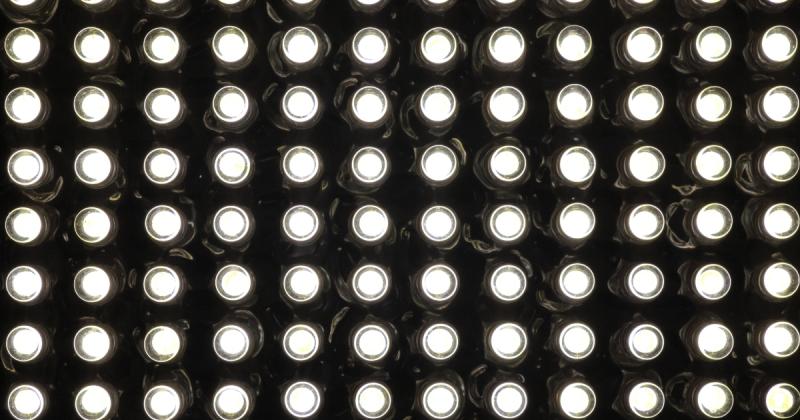A Guide to Miniature LED Light Bulbs: Efficient Lighting for Every Space

In recent years, LED lighting has transformed how we illuminate our homes, workplaces, and even outdoor spaces. Among the various types of LED bulbs, miniature LED light bulbs stand out for their versatility, energy efficiency, and compact size, making them an ideal choice for a wide range of applications. In this guide, we’ll explore what makes miniature LEDs unique, their benefits, and how they can be used to enhance any space, from tiny decorative fixtures to intricate tech projects.
What Are Miniature LED Light Bulbs?
Miniature LED light bulbs are small, highly efficient light sources designed to fit into spaces where traditional bulbs may be too large or bulky. These compact LEDs come in various shapes and designs, including round, cylindrical, and rectangular forms, as well as specialty shapes for specific uses. Due to their size, they’re often used in settings where precise or subtle lighting is needed, such as in electronics, models, displays, and accent lighting.
Miniature LEDs typically have lower power consumption than regular-sized LEDs and other bulb types, and they’re known for producing very little heat, making them safe for delicate setups and enclosed spaces.
The Benefits of Miniature LED Light Bulbs
Miniature LED bulbs offer a variety of benefits that make them a preferred choice for both practical and decorative purposes. Here are some of the top advantages:
1. Energy Efficiency
LEDs are well known for their energy-saving properties, and miniature LEDs are no exception. These bulbs consume minimal power while providing a strong light output, meaning they require less electricity to operate compared to other lighting options.
2. Longevity
LED lights generally last much longer than traditional bulbs, with lifespans ranging from 20,000 to 50,000 hours or more. Miniature LEDs, even in small spaces or continuous-use settings, often last for years without needing replacement.
3. Versatility in Applications
Due to their small size, miniature LEDs can be used in a wide range of applications, from under-cabinet lighting and car dashboards to artistic installations and detailed model lighting. They’re also popular in electronics, where they can indicate power status or provide backlighting.
4. Low Heat Emission
Traditional light bulbs produce a lot of heat, which can be problematic in confined or delicate settings. Miniature LEDs, on the other hand, emit very little heat, making them ideal for use in enclosed spaces or around sensitive materials.
5. Eco-Friendly Lighting Option
Like all LEDs, miniature LEDs are free from harmful chemicals like mercury and consume less power, making them a more environmentally friendly choice than traditional bulbs.
Applications of Miniature LED Light Bulbs
Miniature LED bulbs are a versatile lighting solution suitable for a wide array of settings and purposes. Here are some of the most popular ways to use these efficient light sources:
1. Accent and Ambient Lighting
Miniature LEDs can add subtle but effective lighting to display shelves, bookcases, or architectural details in homes and offices. Their small size makes them easy to conceal, creating a clean, seamless look while adding warmth or vibrancy to a space.
2. Model and Hobby Lighting
For hobbyists and model makers, miniature LEDs are ideal for illuminating intricate details in models, dioramas, or craft projects. They’re especially useful in model train setups, miniatures, and other displays that benefit from precise lighting effects.
3. Automotive and Instrument Panels
Miniature LEDs are widely used in cars for dashboard displays, indicator lights, and even custom ambient lighting. Their low energy consumption makes them a practical choice for vehicles, where efficiency and long life are essential.
4. Electronics and Gadgets
Many electronic devices and gadgets rely on miniature LEDs to indicate power, battery level, and other statuses. They’re also common in keyboards, where they can serve as backlighting for enhanced visibility.
5. Decorative and Holiday Lighting
Miniature LED lights are a popular choice for holiday decorations and fairy lights, as they’re compact, cool to the touch, and capable of emitting a variety of colors. They’re ideal for use around fabrics, in wreaths, and even in small indoor plants.
Choosing the Right Miniature LED Light Bulb
When selecting miniature LED light bulbs, it’s essential to consider the following factors to ensure you get the best lighting experience for your specific needs:
1. Brightness and Color Temperature
Miniature LEDs come in various brightness levels and color temperatures. Warmer colors (like soft white) can create a cozy ambiance, while cooler tones (like daylight or bright white) are better suited for task-oriented or display lighting.
2. Voltage and Compatibility
Different miniature LEDs are designed to operate at different voltages, so it’s crucial to check compatibility with your power source. Low-voltage options (like 12V or 24V) are common, especially for vehicle and electronic applications.
3. Shape and Size
Since miniature LEDs come in various shapes and sizes, select a design that fits your fixture or project requirements. For instance, some may be cylindrical, while others are flat, making them suitable for specific types of installations.
4. Beam Angle
The beam angle of an LED bulb determines how light is distributed. A narrow beam is ideal for focused or directional lighting, while a wider beam works well for ambient or accent lighting in larger areas.
5. Dimmable Options
If you need adjustable lighting, choose dimmable miniature LEDs. Not all LEDs are dimmable, so verify this feature before purchasing to ensure compatibility with any dimmer switches.
Tips for Installing Miniature LED Light Bulbs
Here are some quick tips to help you install and use miniature LEDs effectively:
Use the Right Power Supply: Make sure the power supply matches the voltage of your LED bulbs to avoid damage or poor performance.
Check for Polarity: Many miniature LEDs are polarized, meaning they need to be connected with the correct positive and negative terminals.
Consider Heat Dissipation: Although miniature LEDs emit minimal heat, ensuring good ventilation or adding a small heat sink can improve their lifespan, especially in enclosed spaces.
Protect Against Moisture: If using miniature LEDs in humid or outdoor settings, ensure they’re protected against moisture to prevent short-circuiting or damage.
Conclusion
Miniature LED light bulbs are a powerful and versatile option for lighting solutions, offering everything from energy efficiency and long life to flexibility in installation. Their compact size and low power requirements make them suitable for a wide range of uses, from everyday household lighting to specialized projects in automotive, hobby, and decorative applications. By understanding the various features and applications of these tiny but mighty lights, you can make the most of their potential and create a customized lighting experience for any space.









Comments